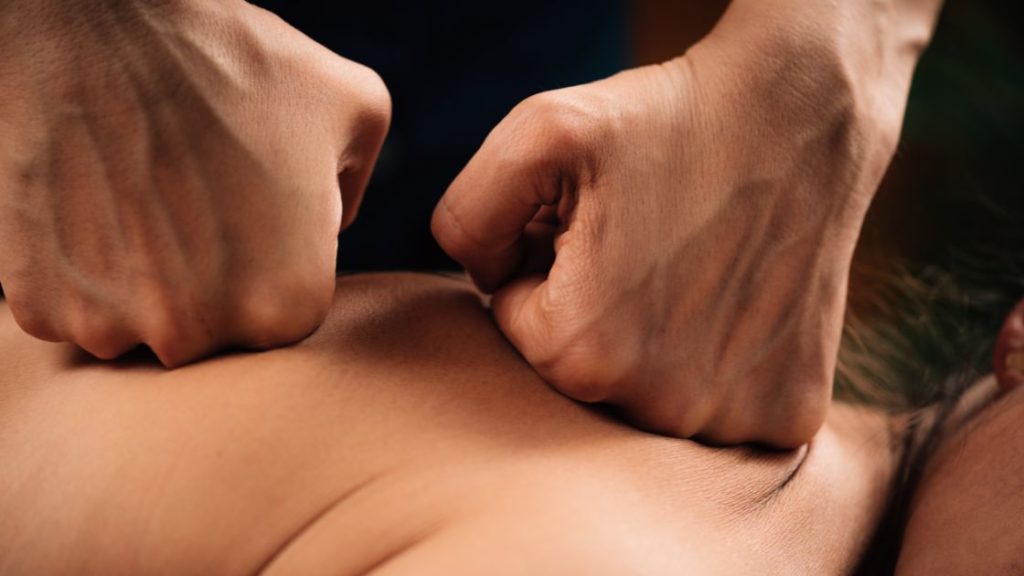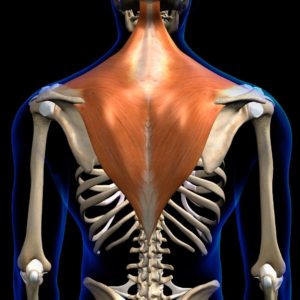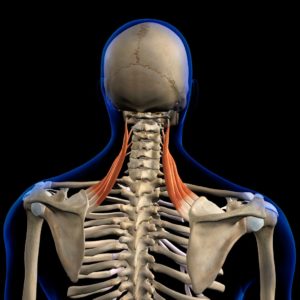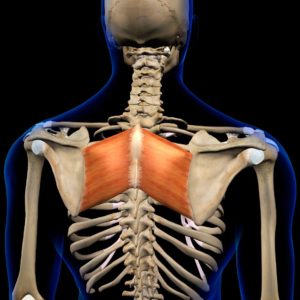Deep Tissue vs Firm Pressure Massage

Is there a difference between a deep tissue massage and a firm pressure massage?
This is a topic we lightly touched on in an older article, and here we’re going to dig a little further into the differences between the two. In the previous blog, there was an emphasis on the common misconception of “no pain, no gain” when it comes to receiving a therapeutic massage. So, I recommend checking that piece out before continuing!
What Does Deep Tissue Massage Entail?
A deep tissue massage is a bodywork modality used to treat musculoskeletal issues, such as backaches and neck pain. With deep tissue massage, the first step is to remove knotted muscular tissue from the superficial muscles. Once those top layer muscles have been released, the therapist will move on to treat the muscles lying deep to the superficial ones.
What exactly does that mean, working from superficial to deep? Let’s say you have neck, shoulder, and upper back pain, and now you’re lying face down (prone) on a massage table. On the upper posterior side of your body, you have a large diamond-shaped muscle called the trapezius, and it covers a good surface of the posterior neck, posterior shoulder, and upper back.
Here’s a picture of that large superficial muscle! When deep tissue is applied to the painful areas described above, the trapezius should be addressed before any of the muscles which lie deep to it, such as the levator scapulae and the rhomboids.
The levator scapulae, a muscle attaching from the cervical spine into the scapula, will respond effectively to deep tissue after knots have been removed from the trapezius.
Likewise, muscular adhesions in the rhomboids (major and minor) will be easier to release following the treatment of the trapezius.
If you look at a full body muscular chart, you’ll see that we have layers upon layers of muscular tissue! In order to relieve pain, restore optimal muscular functioning, and reduce the chance of further injury, we have to treat each muscle individually. To treat every muscle individually, we have to start from the very top layer before digging into the area just deep to it, and then continue to the layers even deeper to those muscles after that.
For this reason, deep tissue massage is a slow process and is usually applied to one specific muscle group per session; for example, if you’re experiencing calf pain, the muscles of your lower leg will receive deep tissue massage while the rest of the body will likely receive a less in-depth massage. That is unless you’re receiving a very long massage! Some massage therapists offer two-hour sessions, so if you’d like deep tissue massage on multiple muscle groups it’s worth considering!
How Does a Firm Pressure Massage Differ?
This may surprise you, considering the name of the modality, but deep tissue massage doesn’t have to require the deepest of deep pressure. As long as your massage therapist can execute the steps listed above, reaching each muscular layer from superficial to deep, the exact amount of pressure applied depends on your personal preference. I can assure you there’s no such thing as a “light pressure-deep tissue” massage, but it is possible to treat multiple layers with medium-deep pressure.
A firm pressure massage, on the other hand, is characterized by deep pressure. It differs from a deep tissue massage because it doesn’t have to target a specific muscle group. It can also be incorporated into other massage modalities. You may ask for a relaxing Swedish massage, which involves long effleurage glides and kneading petrissage, but with firm pressure instead of medium or light. Or perhaps you’d like a hot stone massage, but instead of having the stones stationary on your back, you want them dug into the trigger points on your upper back.
Another thing to note about a firm pressure massage is that the level of firmness is unique to each individual client. I can’t count how many times I’ve had somebody come into my office requesting absurdly deep pressure, only to find that my deepest pressure is too much for them to handle. On a scale of 1 to 10, some people will call my own personal 3/10 a very firm amount of pressure, but every once in a while, I’ll find someone who says my 10/10 will just have to do.
Communication is Key!
There is a difference between therapeutic discomfort and actual physical pain. If you’re holding your breath or recoiling in response to the pressure, your muscles can’t relax, and the knots won’t release.
It’s normal for different parts of your body to have varying responses to firm pressure or deep tissue massage. Your lower back muscles may be soothed by the heavy bodywork, but your gluteal muscles might be too tender to tolerate the same amount of pressure. Maybe your superficial muscles will easily unknot themselves at the start of a deep tissue massage, but the deeper muscles will be more sensitive and require a more careful approach.
Never push your body past its natural limit. If your muscular adhesions can’t release, you may later experience more pain than you initially came into the office with. Those sore muscles will then need the compensation of surrounding muscles, and over time the compensating muscles will tighten too. Eventually you’ll have multiple muscle groups unable to function to their ultimate ability, which will overtime weaken them and put them at greater risk for injury. This is why communication with your therapist is so important! You don’t want bodywork to be counterproductive.
Can Firm Pressure be Applied to All Massages?
The short answer is no.
There are circumstances where a patient can’t safely receive firm pressure. While it’s generally safe to mix deep tissue massage with a sports massage or use firm pressure during a relaxing Swedish massage, there are modalities that need to steer clear of both deep tissue and firm pressure. Here are some examples:
Lymphatic drainage massage is a modality characterized by light gentle strokes. Manual lymphatic drainage is used to guide lymph, a clear fluid which collects toxins, towards the lymph node-rich areas of the body for waste neutralization. The lymphatic system’s primary pathway is located just under the skin, and only light pressure easily hooks onto that thin area between the skin and the muscular tissue.
Oncology massage usually involves a combination of lymphatic drainage and Swedish massage techniques. A weakened immune system may slow the recovery process of a cancer patient experiencing discomfort following a firm pressure massage. Cancer patients are also likely to bruise easily. Unless the patient’s doctor says it’s safe, firm pressure should never be applied during an oncology massage.
Prenatal massage should also involve only light to medium pressure, especially on the low back and near the pelvis. Blood clots are also a risk for pregnant women if strong pressure is applied to the legs.
Now You Know!
Schedule a massage with one of our talented therapists!

Katrina Jenkins
Author, Licensed Massage Therapist
Katrina Jenkins graduated from Towson University in 2013 with a Bachelor’s Degree in Health Science and worked as a nurse’s aide briefly before pursuing her true passion. She graduated from the Massage Therapy Institute of Colorado in April 2016 with honors and completed the Touch of Healers Scholarship Program the following summer. She has been a part of the Moyer Total Wellness Team since the summer of 2017.
Resources
Crawford, Cindy, et al. “The Impact of Massage Therapy on Function in Pain Populations—a Systematic Review and Meta-Analysis of Randomized Controlled Trials: Part I, Patients Experiencing Pain in the General Population.” Pain Medicine, vol. 17, no. 7, 10 May 2016, pp. 1353–1375, www.ncbi.nlm.nih.gov/pmc/articles/PMC4925170/, 10.1093/pm/pnw099.
Koren, Yogev, and Leonid Kalichman. “Deep Tissue Massage: What Are We Talking About?” Journal of Bodywork and Movement Therapies, vol. 22, no. 2, Apr. 2018, pp. 247–251, www.sciencedirect.com/science/article/pii/S1360859217301067, 10.1016/j.jbmt.2017.05.006.
Ozdowski, Lauren, and Vikas Gupta. “Physiology, Lymphatic System.” PubMed, StatPearls Publishing, 2020, www.ncbi.nlm.nih.gov/books/NBK557833/.
Taylor, Rebecca Buffum. “Is Pregnancy Massage Safe and Beneficial?” WebMD, 7 Feb. 2021, www.webmd.com/baby/pregnancy-and-massage#:~:text=These%20circulatory%20changes%20put%20a.
Photo Credit
Canva by microgen
Canva by Hank Grebe
Canva by Hank Grebe
Canva by Hank Grebe



